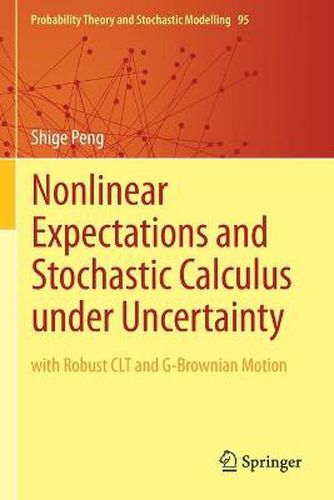Readings Newsletter
Become a Readings Member to make your shopping experience even easier.
Sign in or sign up for free!
You’re not far away from qualifying for FREE standard shipping within Australia
You’ve qualified for FREE standard shipping within Australia
The cart is loading…






This title is printed to order. This book may have been self-published. If so, we cannot guarantee the quality of the content. In the main most books will have gone through the editing process however some may not. We therefore suggest that you be aware of this before ordering this book. If in doubt check either the author or publisher’s details as we are unable to accept any returns unless they are faulty. Please contact us if you have any questions.
This book is focused on the recent developments on problems of probability model uncertainty by using the notion of nonlinear expectations and, in particular, sublinear expectations. It provides a gentle coverage of the theory of nonlinear expectations and related stochastic analysis. Many notions and results, for example, G-normal distribution, G-Brownian motion, G-Martingale representation theorem, and related stochastic calculus are first introduced or obtained by the author.
This book is based on Shige Peng’s lecture notes for a series of lectures given at summer schools and universities worldwide. It starts with basic definitions of nonlinear expectations and their relation to coherent measures of risk, law of large numbers and central limit theorems under nonlinear expectations, and develops into stochastic integral and stochastic calculus under G-expectations. It ends with recent research topic on G-Martingale representation theorem and G-stochastic integral for locally integrable processes.
With exercises to practice at the end of each chapter, this book can be used as a graduate textbook for students in probability theory and mathematical finance. Each chapter also concludes with a section Notes and Comments, which gives history and further references on the material covered in that chapter.
Researchers and graduate students interested in probability theory and mathematical finance will find this book very useful.
$9.00 standard shipping within Australia
FREE standard shipping within Australia for orders over $100.00
Express & International shipping calculated at checkout
This title is printed to order. This book may have been self-published. If so, we cannot guarantee the quality of the content. In the main most books will have gone through the editing process however some may not. We therefore suggest that you be aware of this before ordering this book. If in doubt check either the author or publisher’s details as we are unable to accept any returns unless they are faulty. Please contact us if you have any questions.
This book is focused on the recent developments on problems of probability model uncertainty by using the notion of nonlinear expectations and, in particular, sublinear expectations. It provides a gentle coverage of the theory of nonlinear expectations and related stochastic analysis. Many notions and results, for example, G-normal distribution, G-Brownian motion, G-Martingale representation theorem, and related stochastic calculus are first introduced or obtained by the author.
This book is based on Shige Peng’s lecture notes for a series of lectures given at summer schools and universities worldwide. It starts with basic definitions of nonlinear expectations and their relation to coherent measures of risk, law of large numbers and central limit theorems under nonlinear expectations, and develops into stochastic integral and stochastic calculus under G-expectations. It ends with recent research topic on G-Martingale representation theorem and G-stochastic integral for locally integrable processes.
With exercises to practice at the end of each chapter, this book can be used as a graduate textbook for students in probability theory and mathematical finance. Each chapter also concludes with a section Notes and Comments, which gives history and further references on the material covered in that chapter.
Researchers and graduate students interested in probability theory and mathematical finance will find this book very useful.